This is my problem:
The first input is the observed data of MUSE, which is an astronomical instrument provides cubes, i.e. an image for each wavelength with a certain range. This means that, taken all the wavelengths corresponding to the pixel i,j, I can extract the spectrum for this pixel. Since these images are observed, for each pixel I have an error.
The second input is a spectrum template, i.e. a model of a spectrum. This template is assumed to be without error. I map this spectra at various redshift (this means multiply the wavelenghts for a factor 1+z, where z belong to a certain range).
The core of my code is the cross-correlation between the cube, i.e. the spectra extracted from each pixel, and the template mapped at different redshift. The result is a cross-correlation function for each pixel for each z, let's call this computed function as f(z). Taking, for each pixel, the argmax of f(z), I get the best redshift.
This is a common and widely-used process, indeed, it actually works well.
My question:
Since my input, i.e. the MUSE cube, has an error, I have propagated this error through the cross-correlation, obtaining an error on f(z), i.e. each f_i has a error sigma_i. So, how can I compute the error on z_max, which is the value of z corresponding to the maximum of f?
Maybe a solution could be the implementation of bootstrap method: I can extract, within the error of f, a certain number of function, for each of them I computed the argamx, so i can have an idea about the scatter of z_max.
By the way, I'm using python (3.x) and tensorflow has been used to compute the cross-correlation function.
Thanks!
EDIT Following @TF_Support suggestion I'm trying to add some code and some figures to better understand the problem. But, before this, maybe it's better a little of math.
With this expression I had computed the cross-correlation:
where S is the spectra, T is the template and N is the normalization coefficient. Since S has an error, I had propagated these errors through the previous relation founding:
where SST_k is the the sum of the template squared and sigma_ij is the error on on S_ij (actually, I should have written sigma_S_ij).
The follow function (implemented with tensorflow 2.1) makes the cross-correlation between one template and the spectra of batch pixels, and computes the error on the cross-correlation function:
@tf.function
def make_xcorr_err1(T, S, sigma_S):
sum_spectra_sq = tf.reduce_sum(tf.square(S), 1) #shape (batch,)
sum_template_sq = tf.reduce_sum(tf.square(T), 0) #shape (Nz, )
norm = tf.sqrt(tf.reshape(sum_spectra_sq, (-1,1))*tf.reshape(sum_template_sq, (1,-1))) #shape (batch, Nz)
xcorr = tf.matmul(S, T, transpose_a = False, transpose_b= False)/norm
foo1 = tf.matmul(sigma_S**2, T**2, transpose_a = False, transpose_b= False)/norm**2
foo2 = xcorr**2 * tf.reshape(sum_template_sq**2, (1,-1)) * tf.reshape(tf.reduce_sum((S*sigma_S)**2, 1), (-1,1))/norm**4
foo3 = - 2 * xcorr * tf.reshape(sum_template_sq, (1,-1)) * tf.matmul(S*(sigma_S)**2, T, transpose_a = False, transpose_b= False)/norm**3
sigma_xcorr = tf.sqrt(tf.maximum(foo1+foo2+foo3, 0.))
Maybe, in order to understand my problem, more important than code is an image representing an output. This is the cross-correlation function for a single pixel, in red the maximum value, let's call z_best, i.e. the best cross-correlated value. The figure also shows the 3 sigma errors (the grey limits are +3sigma -3sigma).
If i zoom-in near the peak, I get this:
As you can see the maximum (as any other value) oscillates within a certain range. I would like to find a way to map this fluctuations of maximum (or the fluctuations around the maximum, or the fluctuations of the whole function) to an error on the value corresponding the maximum, i.e. an error on z_best.



